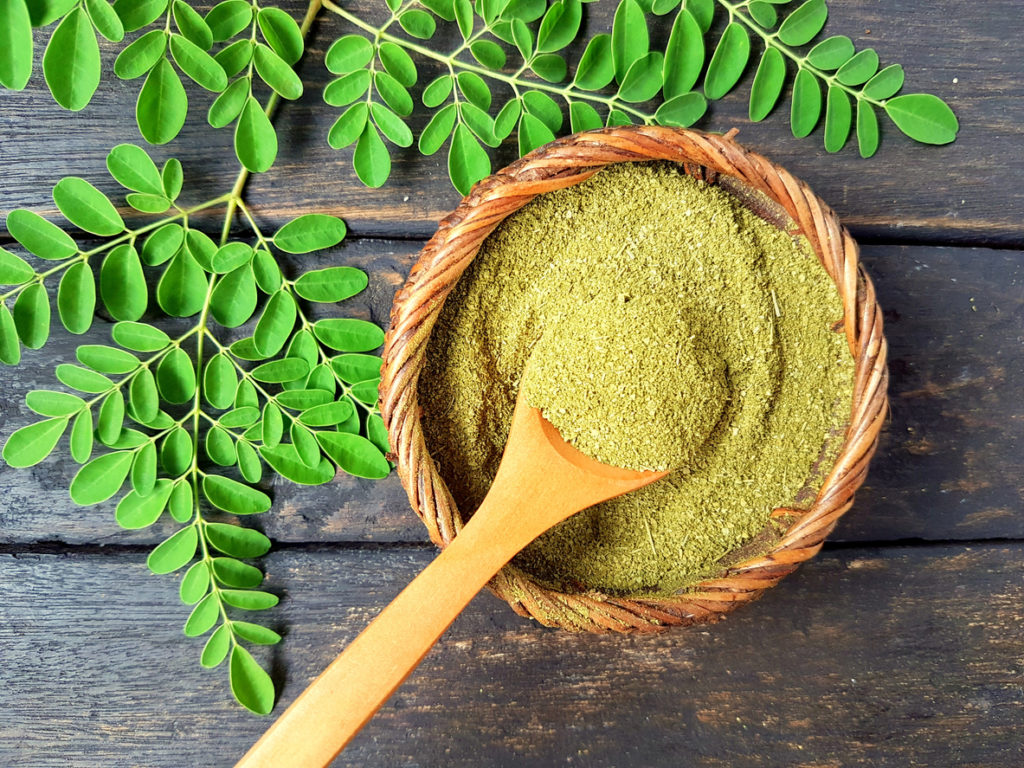Ask the Coaches: What is Moringa? And What are the Benefits?

Q: Coaches, I like to think I’m pretty “hip” on nutrition and keep up-to-date on the latest fitness information. (By the way, thanks for all the info on the biggest and best, in my opinion, trend—the keto diet). Yet, I recently came across something I’d never heard of: “Moringa.” What is Moringa? And is it something I should add to my lifestyle for even greater health?
Thanks for your help keeping me “in the know!”
-Maureen
A: Thanks for the great feedback, Maureen! We, too, like to stay in the know with new trends as well as the most effective methods for living healthier, happier lives.
So, let’s get right to it. The merengue is nothing new. And dancing is one of the most fun ways to add a bit of exercise into your week. This dance actually became popular back in…
Okay, I’m just having a little fun. I know you’re asking about “Moringa,” the latest superfood trend that is being promoted as a miracle plant in some circles. Claims include benefits for joint pain, asthma, high blood pressure, and sex drive, to mention just a few on the large and growing list. So, what is Moringa?
What is Moringa?
Moringa oleifera (also known as the “drumstick tree,” “horseradish tree,” and ben oil tree) is a fast-growing tree native to the foothills of the Himalayas in North West India. (It’s now also grown in Asia, Africa, and South America.) Many parts of this tropical or subtropical plant are edible. In fact, Moringa is one of the vegetables in the Brassica family, which also includes other common cruciferous veggies like cauliflower, broccoli, cabbage, and kale.
What are the Health Benefits of Moringa
The leaves, which are used as vegetables in Northern India and other neighboring areas, are a good source of vitamin C, beta-carotene, B vitamins (especially B6), vitamin K, magnesium, as well as other essential nutrients. A 100-gram serving (which is a huge ~5-cup serving of fresh greens), contains just 64 calories, a little over 8 grams of carbs with 2 grams of fiber, and 9 grams of protein. The leaves can be steamed like spinach (often with curry), and they’re also dried and crushed into a powder to be used in soups and sauces.
To put its nutrient density into perspective, 100 grams of dry Moringa leaf contains:
- 10 TIMES the vitamin A of carrots
- 12 TIMES the vitamin C of oranges
- 17 TIMES the calcium of milk
- 15 TIMES the potassium of bananas
- 25 TIMES the iron of spinach
- 9 TIMES the protein of yogurt
But the leaves aren’t the only edible part of the plant. The immature seed pods (which is where the “drumstick” nickname comes from) are regularly eaten in South Asia. Again, they’re prepared as a curry by parboiling, and they are a rich source of vitamin C as well as fiber, potassium, magnesium, and manganese. The seeds are also eaten like peas or roasted like nuts, and they are rich in nutrients like vitamin C and B vitamins. The seed oil and roots are also edible.
The Moringa plant also contains omega-3 and omega-6 fatty acids. And Moringa is perhaps best known for being a rich source of phytochemicals that have both antioxidant and anti-inflammatory properties. These powerful plant nutrients include flavonoids and polyphenols, which are well-known for combating free radicals and preventing oxidative damage.
As such a rich source of nutrients, you can see where Moringa is getting its miracle reputation, especially in areas where malnutrition is a concern. However, although it’s high in nutrients, it also appears to contain antinutrients, which may reduce the absorption of certain minerals.
Not surprisingly, Moringa is now gaining popularity in Western countries—almost exclusively as a dietary supplement superfood, sold either as a capsule or powder to add to your smoothie or drink as tea. Much of the reason appears to be because of its high antioxidant levels, including vitamin C, beta-carotene, as well as various flavonoids (like quercetin) and polyphenols.
Maintaining healthy blood sugar levels is a key to health and longevity, and Moringa has been shown in several animal studies to help lower blood sugar levels. More research is being done to see if these effects also occur in humans, but the studies are limited at this point. Still, one study with 30 women who supplemented with 7 grams of Moringa leaf powder daily for three months experienced a 13.5% decrease in fasting blood sugar. Another small study with diabetics found 50 grams with a carbohydrate-containing meal reduced the post-meal increase in blood sugar by 21%. And in mice studies, Moringa has been shown to have positive effects on insulin sensitivity, leading to reduced weight gain and improved insulin function.
Many of Moringa’s effects are believed to be due to isothiocyanates, which belong to a class of compounds called glucosinolates. They are also found in other cruciferous veggies like cauliflower and broccoli, and research suggests they may help support the body’s immune system as well as its response to inflammation. While further studies are warranted, animal studies also indicate it has the potential to reduce cholesterol levels.
What is Moringa? A Recap
Moringa might not be the claimed miracle created to fight hundreds of diseases (at least not yet) – or as fun as doing the merengue – but it does appear to be a nutrient-dense powerhouse with some fantastic health-boosting potential. At the very least, it’s packed with phytochemicals (that have antioxidant anti-inflammatory properties), and it’s a rich source of vitamin C, beta-carotene, B vitamins, vitamin K, magnesium, as well as other essential nutrients. We look forward to helping you stay in the know, Maureen, as more information becomes available on Moringa and other healthful trends.







